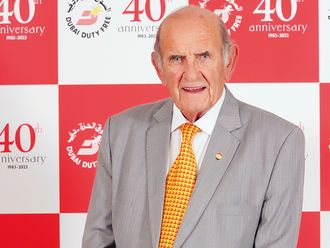As I was getting ready to ask for the bill, having just finished lunch with a seasoned CEO from one of the region’s top companies, he leant forward and asked, “Do you believe in consensus leadership?”
My body language gave away my distaste for consensus-based leadership before I could even ask him a clarifying question to understand what was driving his inquiry.
He was facing a change in the business and was facing extreme pressure to create a consensus based company where group agreement is the priority. I understand why consensus-based leadership is popular. Theoretically it seems like a good idea.
After all achieving consensus is perceived to be collaborative and it is argued that agreement improves commitment. But does everyone need to hold the same opinion?
What level of agreement is needed for a consensual outcome? A simple majority? Or a super majority — 90 per cent, 80 per cent, 75 per cent, two-thirds? Or would it need unanimous agreement?
Consensus may be defined as an acceptable resolution, where everyone gives his or her opinion for the sake of the group even if it is not the “favourite” of each individual involved. Working to achieve consensus can become highly political as each person lobbies to sway others to their point of view.
Just consider the role of lobbying in a democracy. It is a horrid picture of what happens when consensus is the goal. The corporate hallways begin to look just like the halls of congress with all sorts of back-aisle dealings.
And when it doesn’t become political, consensus-based leadership runs the risk of achieving the “least” common denominator as the point where everyone can agree.
Is the consent of the group always the right thing to do? It probably is not. While there is the off-chance people can consent to a brilliant idea, usually, it means ideas get stripped off their brilliance as those tend to be the dividing points of view.
True consensus is nearly impossible to achieve in a business. In the region, it is more common to find “faux” consensus where employees agree due to fear, respect or cultural background.
You have them say “Yes, boss!” and followed by silence or not speaking up, which are mistaken as being consensual. An agreement is granted whether they believe it or not, but true consensus is absent.
Consultation
Back to that lunch. That CEO’s experience and hunch said consensus-based leadership is not good. And I confirmed that he was right. We discussed how a better approach is consultation, listening to the opinions of others, even debating the ideas, yet with the leader acting on what he feels is best after being informed.
The final decision resides with the leader who takes into consideration what others have said.
Often, consensus is confused with consultation. They are very different. The majlis style of leadership is an ideal picture of consultative leadership. It is a tribal tradition preserved from the historic days and remains a central part of the cultural history of the Middle East.
It is where opinions are sought and decisions are made. The majlis’ effect demonstrates a type of maturity in willingly listening to others, including them by seeking their opinion. Yet, there is the retention of leadership control by acting after sufficient inputs are sought.
In a majlis, the leader holds positional authority — autocracy — but he listens and takes on board the opinions of those being led. The art of consultation is very much in the fibre of regional leadership.
Rarely would the ruler decide in utter contradiction to the voice of the majlis. But that does not mean that the voice of the majority rules. The leader is to act in the best interests of all.
Decisions should be obtained through counsel, consultation and consent within a company. You should not act as a Lone Ranger or power hungry mongrel; both are as bad as is the other end of the pendulum — unanimous consent.
You should involve those affected by a decision, largely to make sure you accurately understand others’ perspectives. Once you have consulted with others, then it is time to decide and act.
The writer is a leadership adviser and author of the “10 Tips for Leading in the Middle East” and other writings. Follow him on Twitter: @tommyweir.












